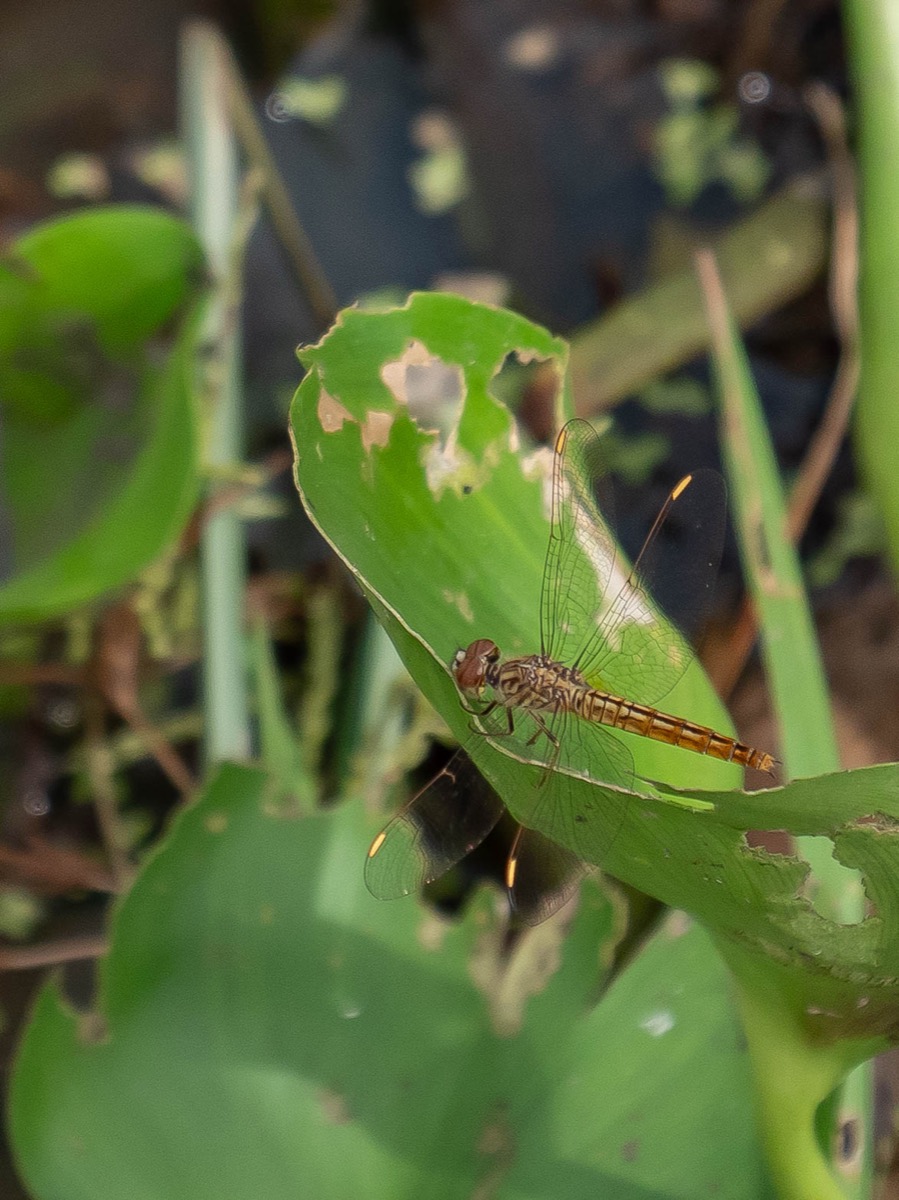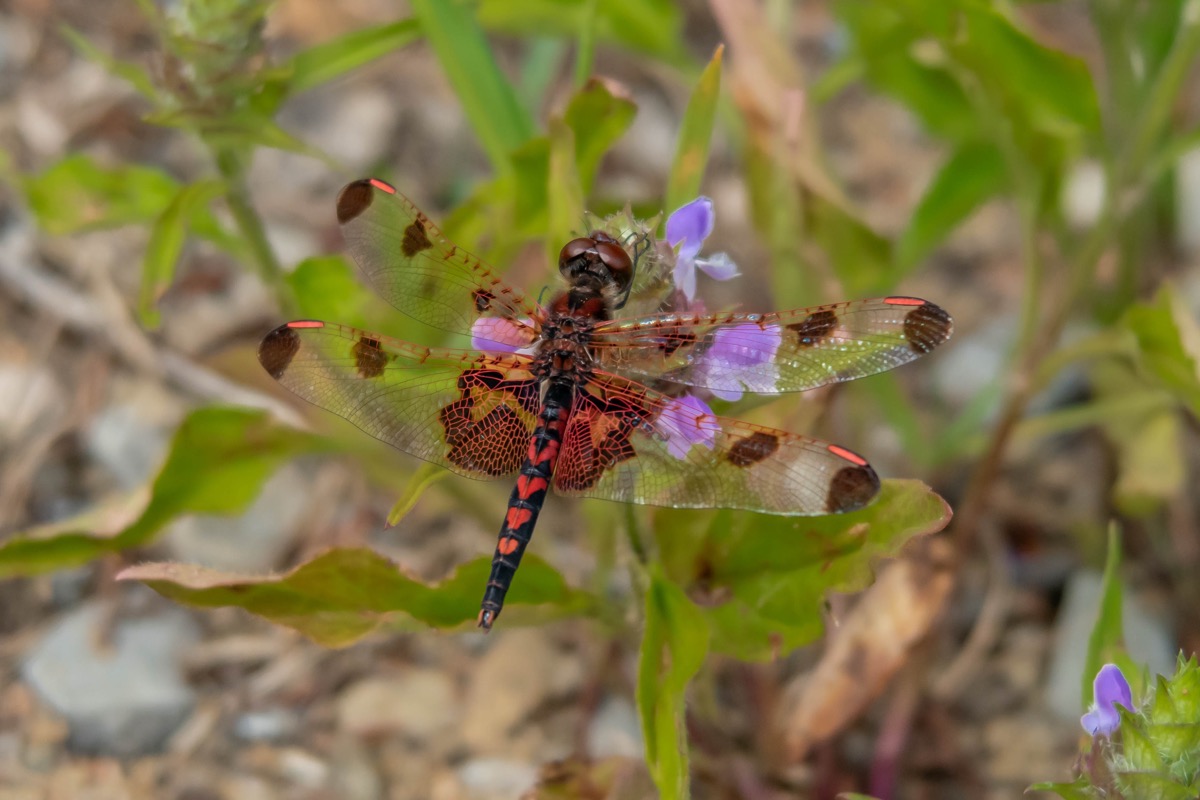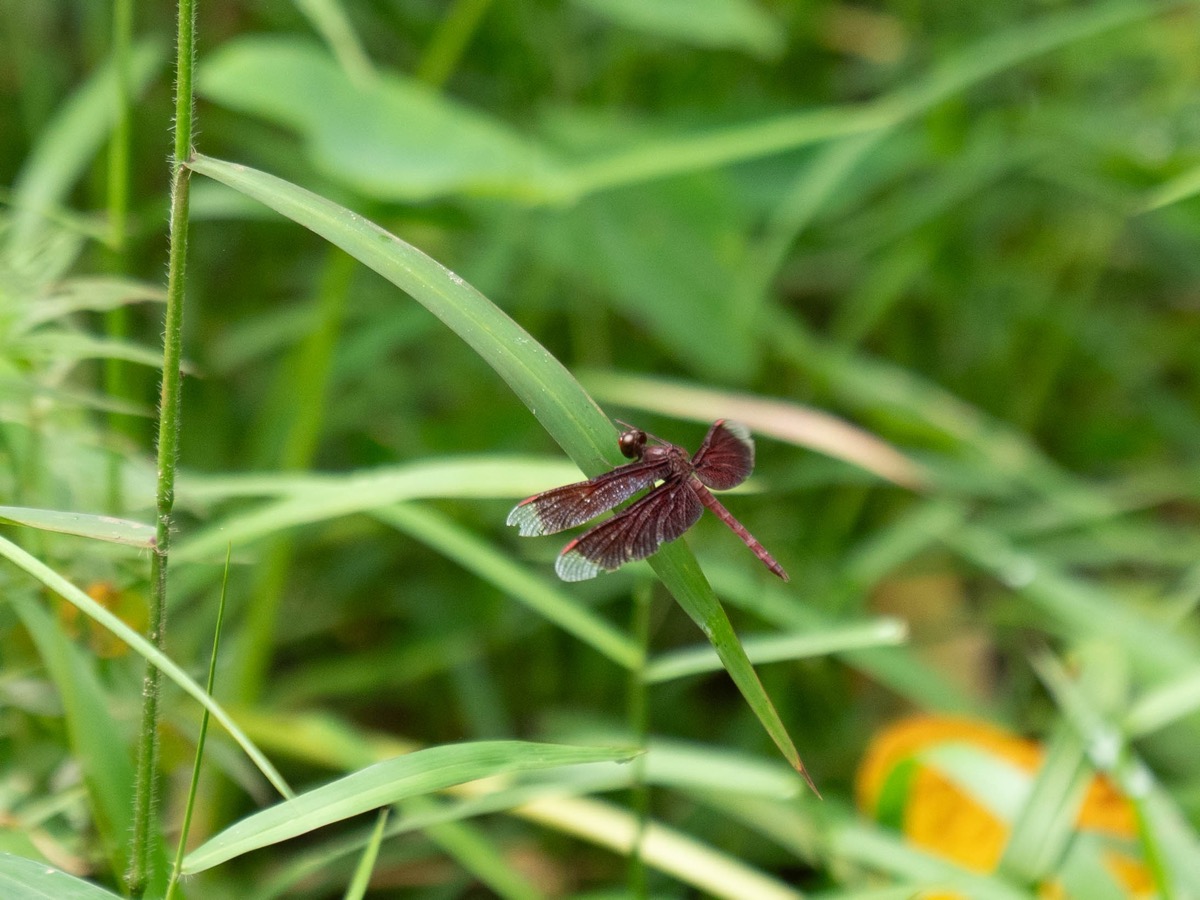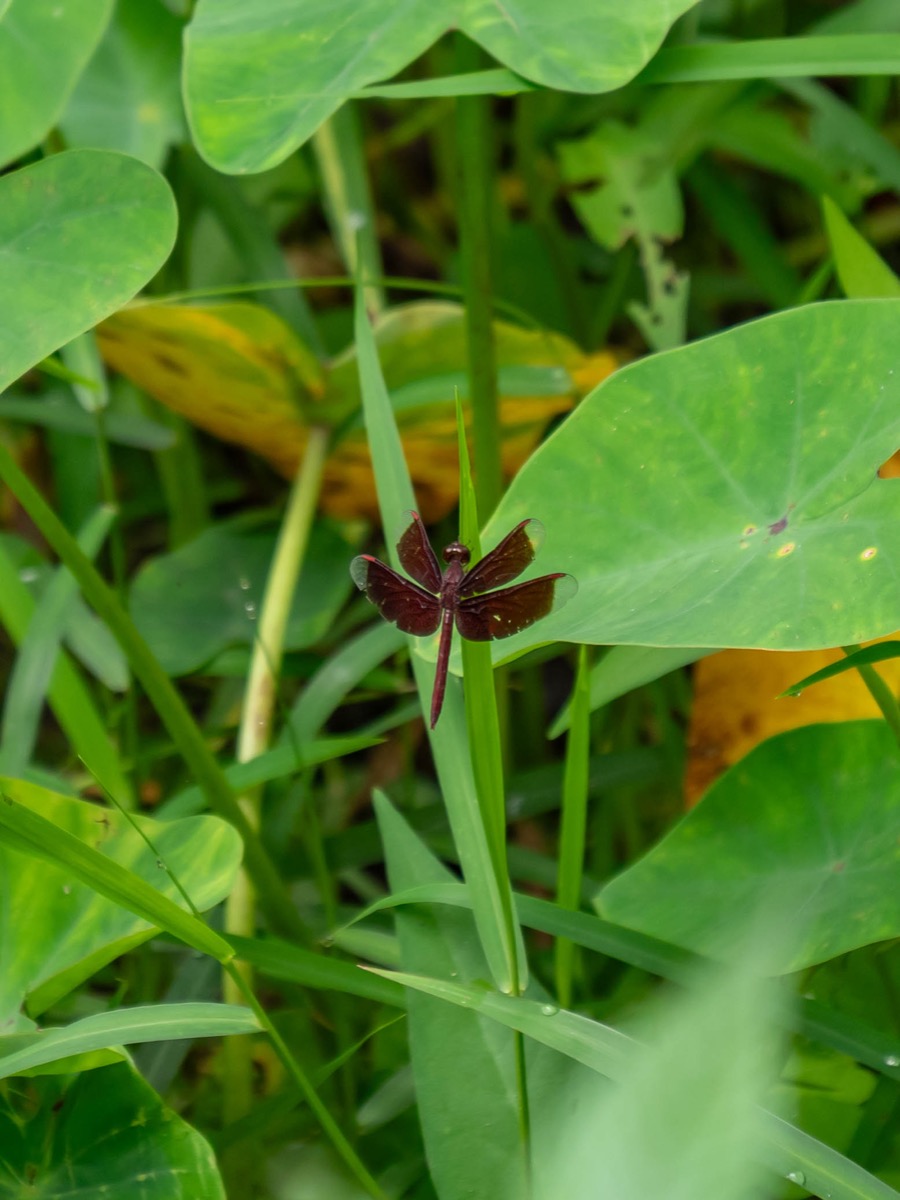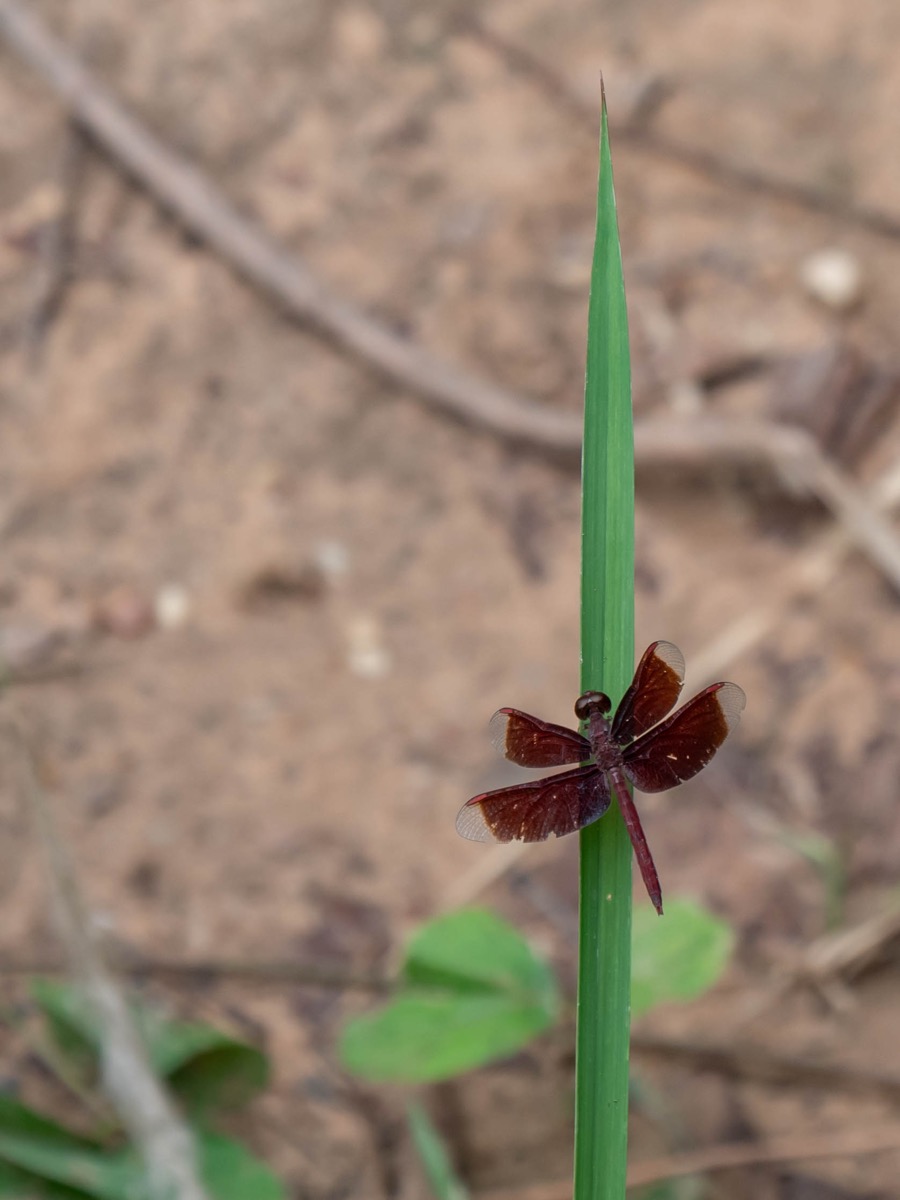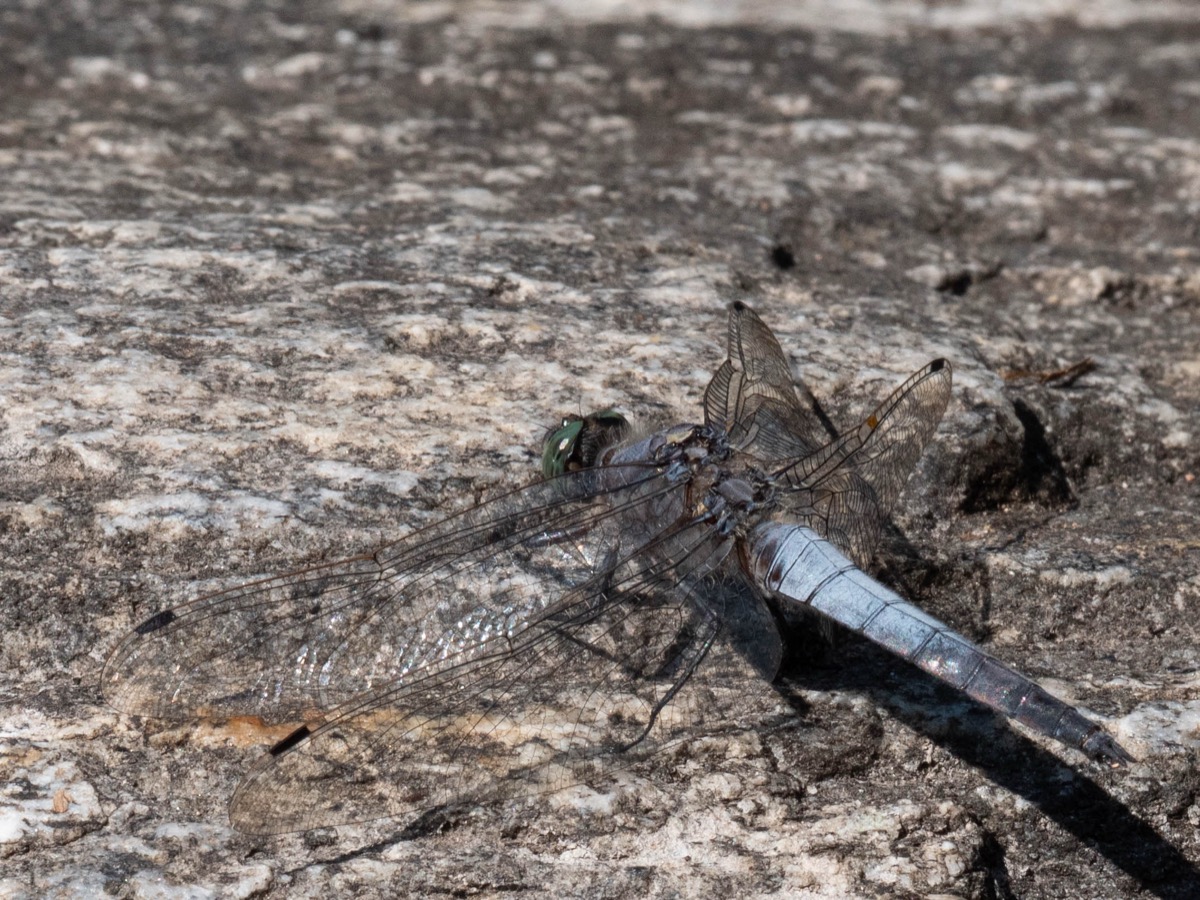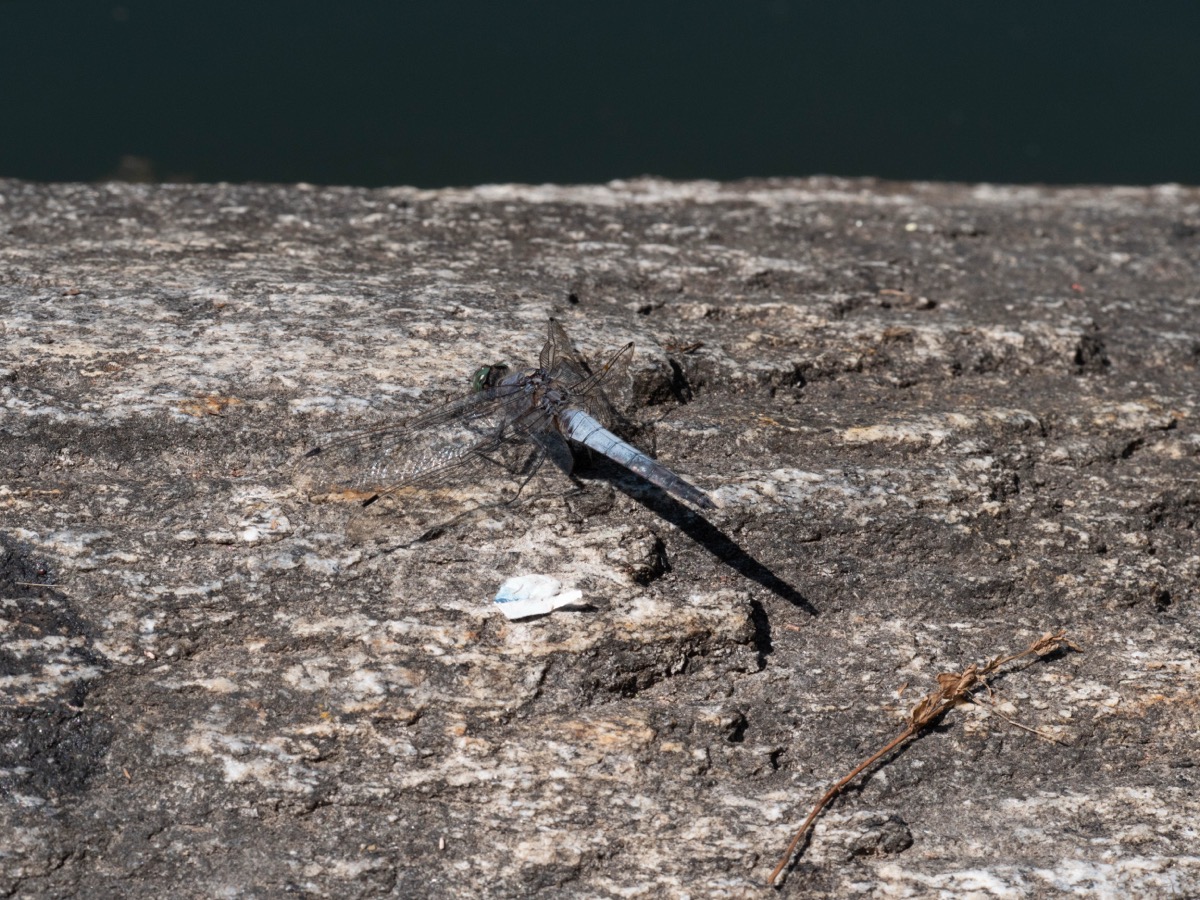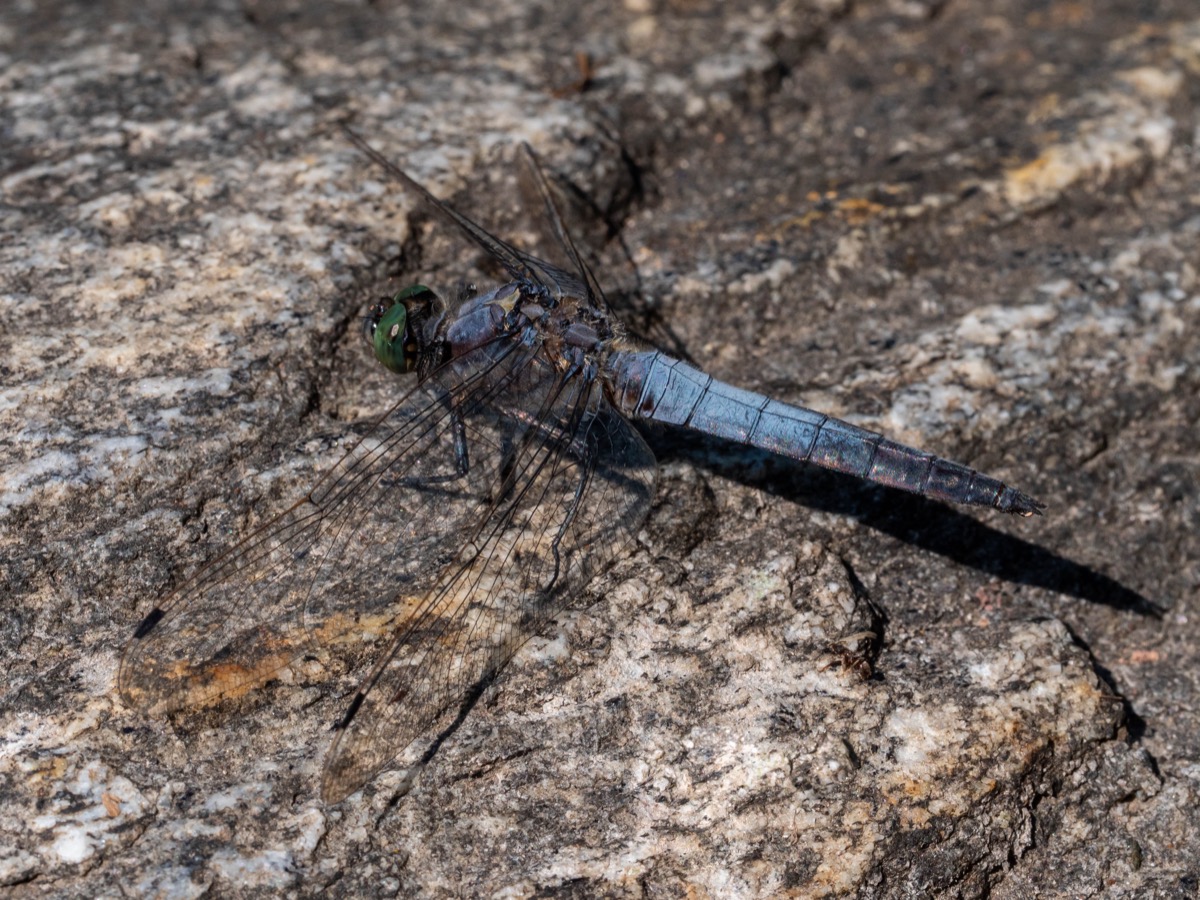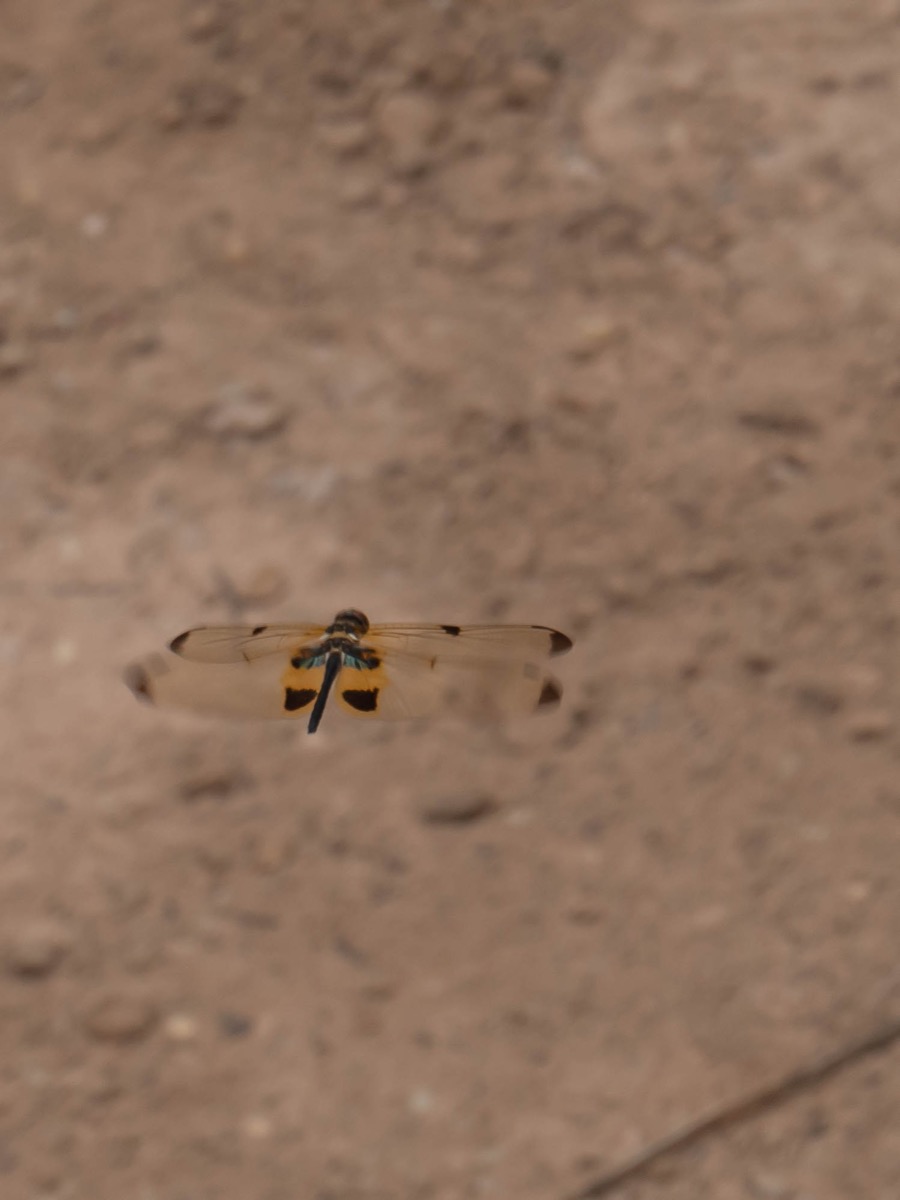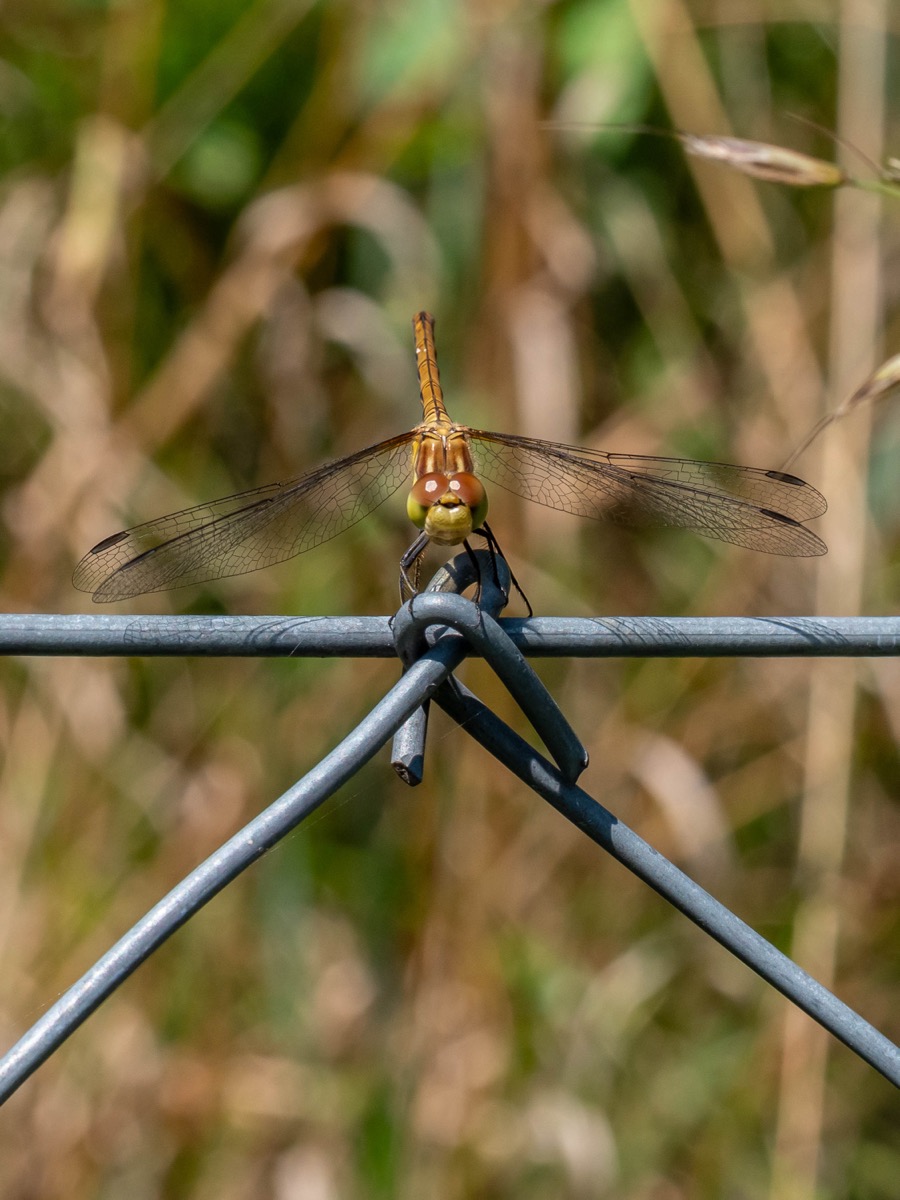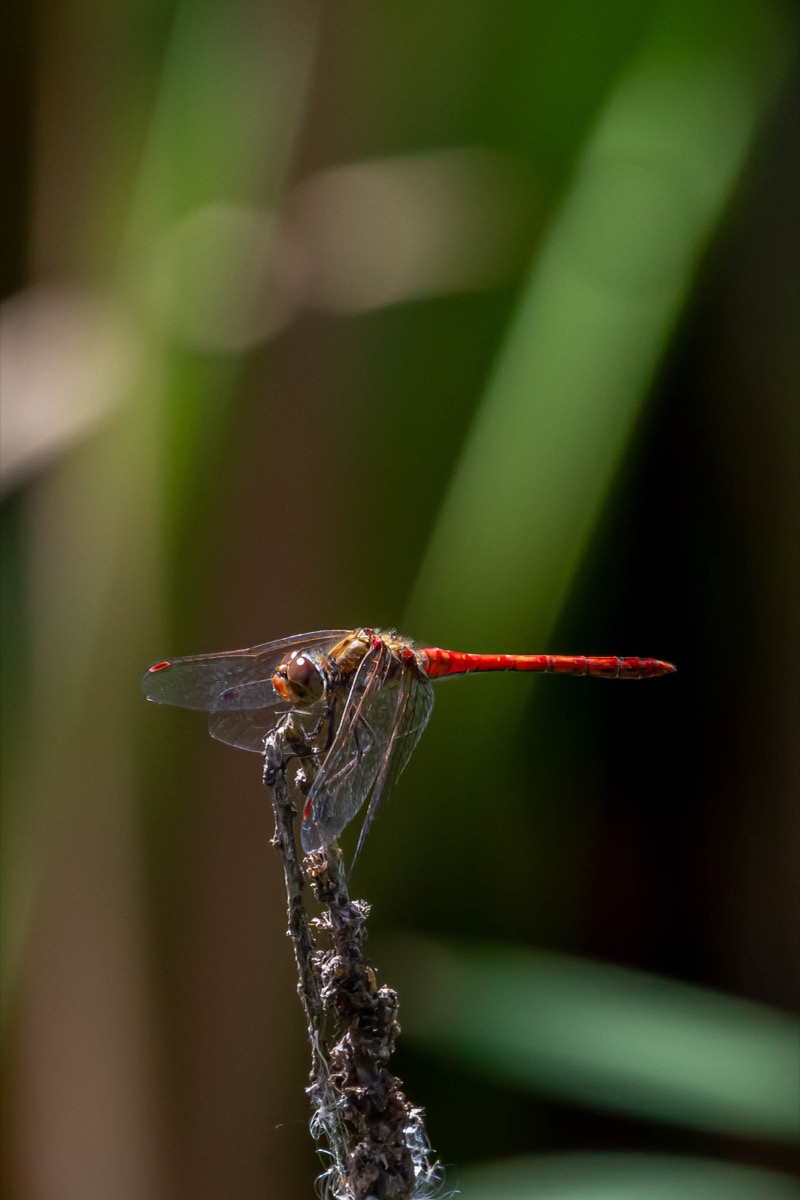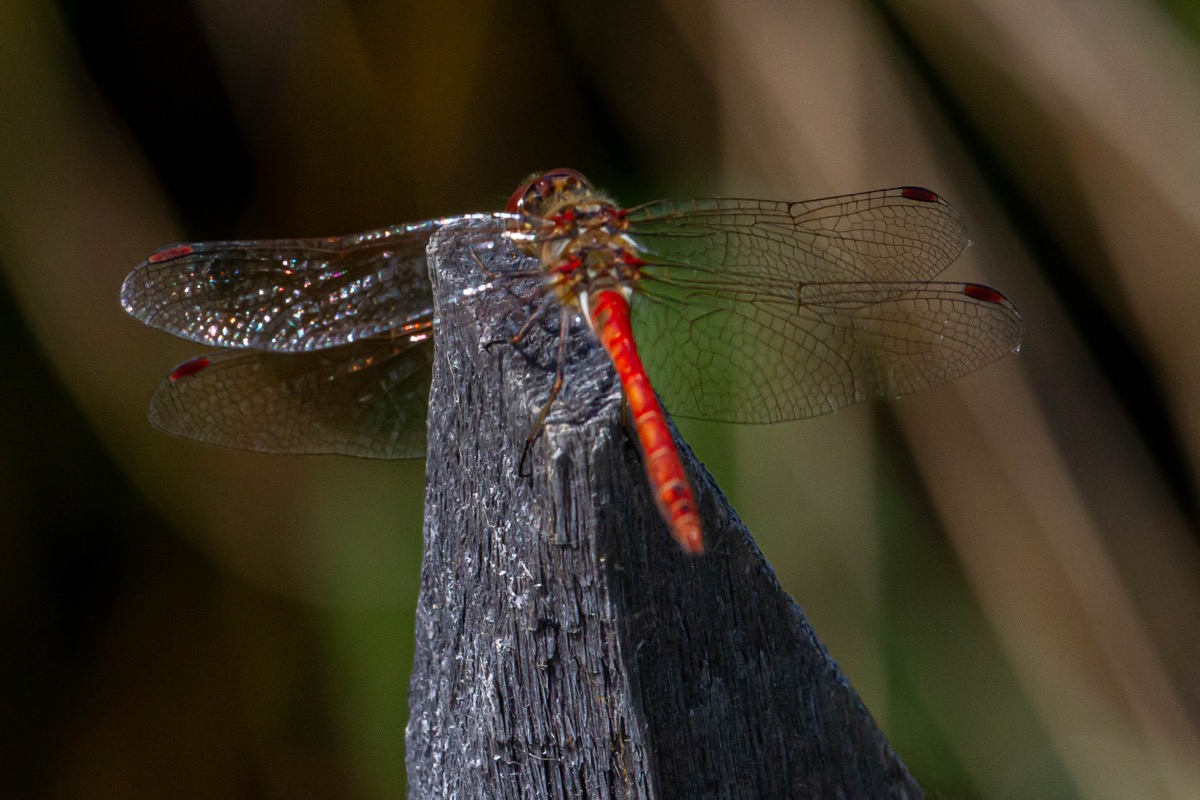Characteristics
- Medium to large size (typically 30 to 50 mm)
- Stout body, often brightly colored: red, yellow, blue, brown, black
- Wings spread at rest, sometimes tinted or patterned
- Eyes joined at the top of the head
- Fast flight often interrupted by regular perching
Habitat
Libellulidae are found around:
- Ponds, pools, ditches, lakes, marshes
- Sunny areas with sparse aquatic vegetation
- Frequently perch on rocks, branches, or exposed stems in full sun
- Some species colonize temporary or artificial habitats
Biology
- Territorial males, perched near water to guard their area
- Mating in “heart” position, followed by oviposition in flight, often alone
- Eggs laid in water or on submerged vegetation, sometimes in tandem
- Aquatic larvae, stout, partly buried in mud or among vegetation
- Rapid larval development in some species (1 year or less)
Common Genera
- Libellula – Stout-bodied, often with tinted wings (e.g. Libellula depressa)
- Orthetrum – Numerous bluish or brownish species (O. cancellatum, O. coerulescens)
- Sympetrum – Small red or yellow dragonflies, very common in late summer (S. sanguineum, S. striolatum)
- Crocothemis, Leucorrhinia, Trithemis – Other genera found in warm or boggy habitats
Special Features
- Most visible family in wetlands during summer
- High variability in flight and perching behavior
- Sexual dimorphism common (females duller or differently colored)
- Good colonizers, some species are pioneers
